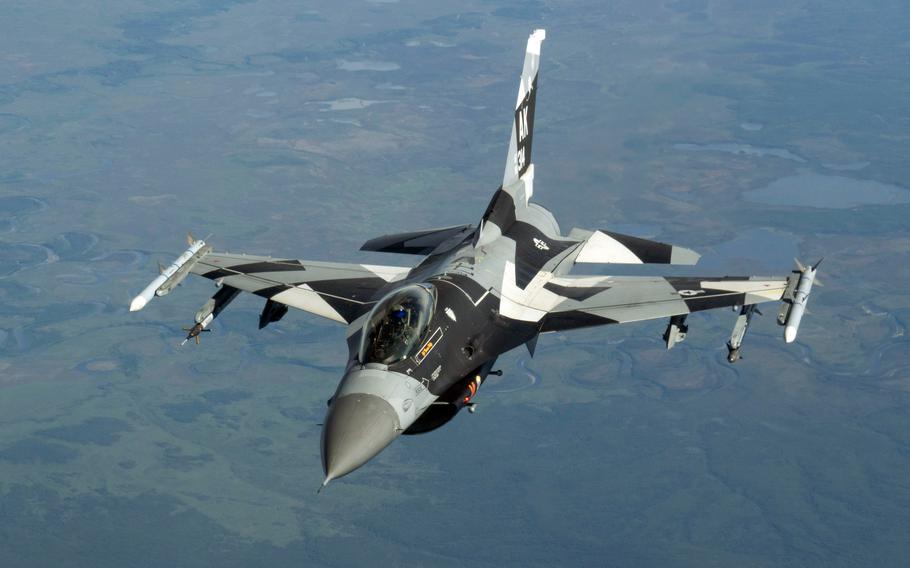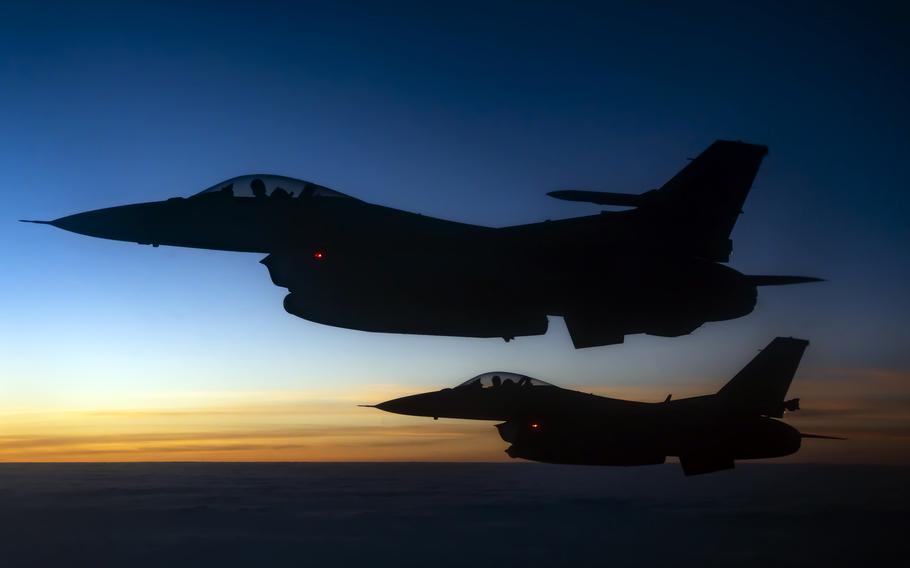
An F-16 Fighting Falcon maneuvers into a refueling position after an air-combat maneuvering sortie over Joint Pacific Alaska Range Complex, June 18, 2021, in support of RED FLAG-Alaska 21-2. (Mario Calabro/U.S. Air Force)
The F-16 Fighting Falcon turned 50 over the weekend — though if things had gone to plan, the military might have been celebrating the milestone next month.
Test pilot Phil Oestricher flew the prototype YF-16 for the first time Jan. 20, 1974, at Edwards Air Force Base, Calif. Originally meant to be a high-speed taxi run, the test turned into a six-minute flight as Oestricher took the jet into the air to avoid a crash, according to a 2020 article in Popular Mechanics and interviews with Oestricher.
“We had an unfortunate wiring problem in the airplane where the exhaust nozzle would not open up, thus killing thrust,” Oestricher said in a 2012 video interview with Lockheed Martin. “The airplane was very sensitive in roll. It rolled violently left; I countered with an equally violent right command. We were instantly in what’s called a pilot-induced oscillation, the airplane rolling back and forth very quickly. It’s turning left all this time. I could see it was gonna go out into the dirt, so I just powered it up and let go of the controls, just let it fly away.”
Oestricher again was behind the controls for the YF-16’s first official flight Feb. 2, 1974. The first operational F-16A was delivered to 388th Tactical Fighter Wing at Hill Air Force Base, Utah, in January 1979, according to an Air Force fact sheet.
The F-16 was built under an unusual agreement between the United States and NATO countries Belgium, Denmark, Netherlands and Norway. Portugal has since joined the consortium.
F-16s have deployed in support of Operation Desert Storm in the Persian Gulf, Operation Allied Force in Serbia, and during the Iraq and Afghanistan wars. It can reach speeds of 1,500 mph (Mach 2) with a payload of two 2,000-pound bombs, two AIM-9, two AIM-120 and two 2400-pound external fuel tanks, according to the fact sheet.

Two U.S. Air Force F-16 Fighting Falcon aircraft, assigned to the 121st Expeditionary Fighter Squadron, fly over U.S. Central Command’s area of responsibility during a mission in support of Combined Joint Task Force — Operation Inherent Resolve, July 17, 2021. (Taylor Crul/U.S. Air Force)